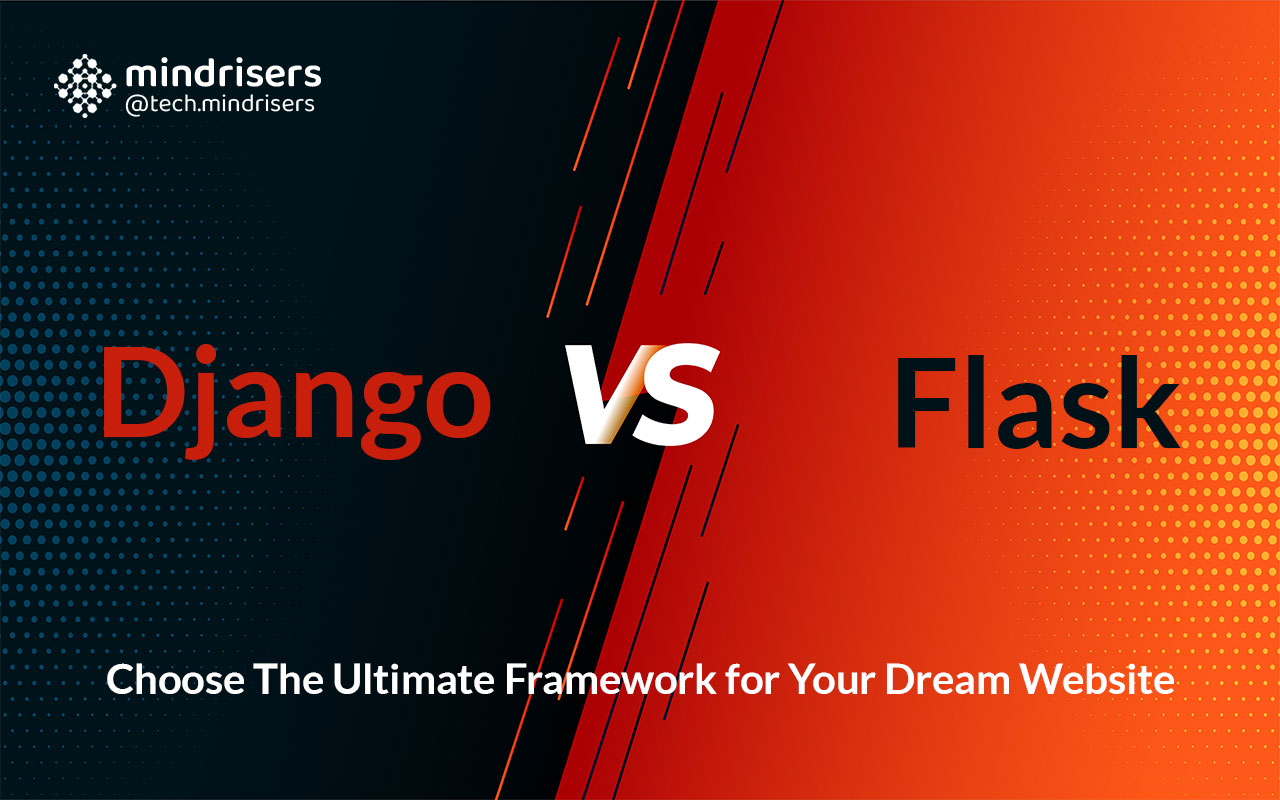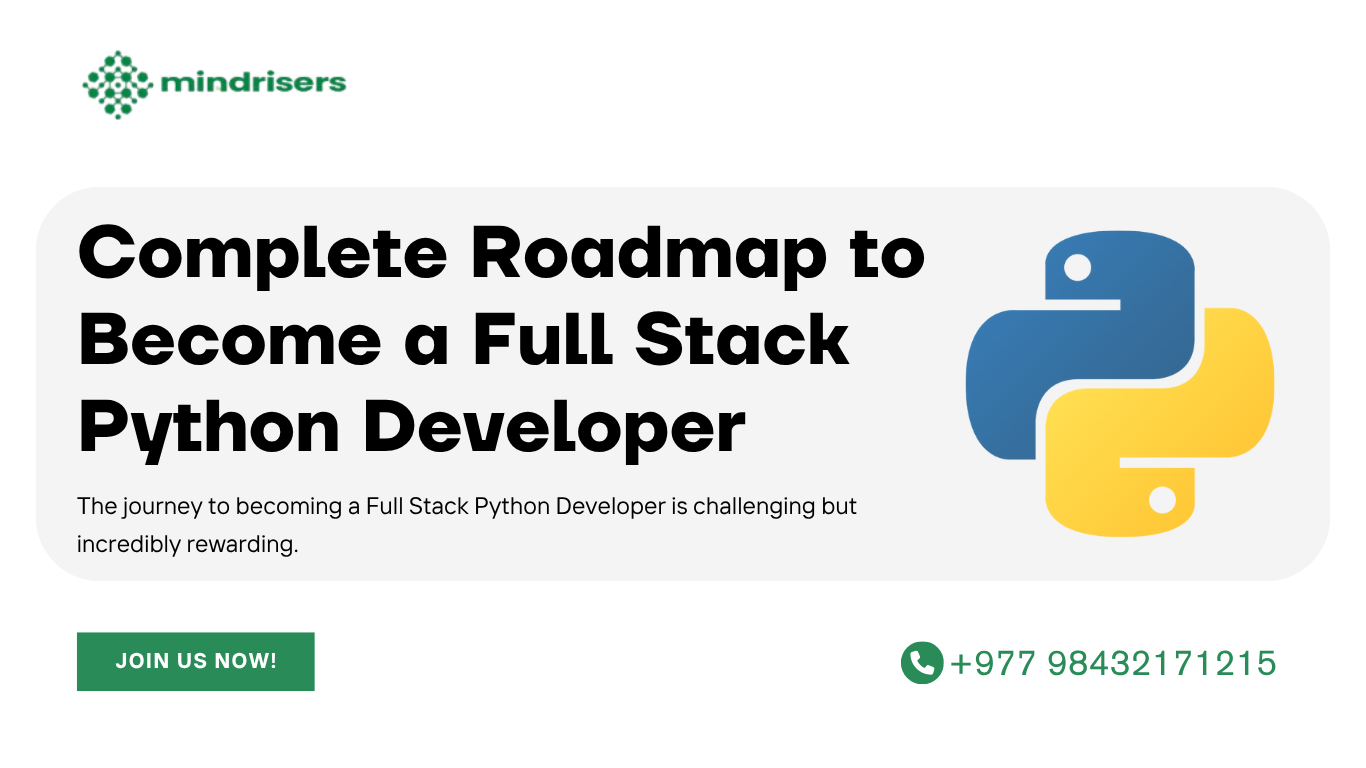
Shreezana Lopchan - Author
2025-04-07
Web developers who work with Python need to select between Flask and Django as their framework foundation. The selection of either framework leads to unnecessary complications or scalability problems because they offer different advantages.
From performance and popularity to REST API features and ease of use for beginners, this comprehensive guide will examine every facet of Django vs. Flask to assist you in selecting the best option for your particular requirements.
Understanding Django: The Full-Featured Powerhouse
What is Django?
The Django system operates as a high-level Python web framework that includes all essential features in its foundation as per its "batteries-included" approach. F
rom 2003 Adrian Holovaty and Simon Willison developed the software with the intent to facilitate developers in the creation of complex websites that connect to databases. Django implements the Model-View-Template (MVT) architectural pattern that functions as an MVC variant.
Why Developers Love Django
- The pre-packaged features in Django provide developers a fast development environment by managing administrative panels and authentication besides the ORM functionality.
- Scalability – Powers major platforms like Instagram, Pinterest, and The Washington Post.
- Security features built into the Django framework protect applications from SQL injection attacks as well as XSS and CSRF and clickjacking vulnerabilities.
- Versatility – Used for e-commerce, CMS, social networks, and data analytics platforms.
Understanding Flask: The Lightweight and Flexible Alternative
What is Flask?
The micro-framework nature of Flask provides developers with essential web development tools but lets them handle the remaining aspects of their projects.
Armin Ronacher developed Flask in 2010 as a framework that stands out for its modular structure and easy-to-use design. Flask provides developers with complete control over project structure because it does not impose any strict requirements.
Why Developers Love Flask
- Minimalist & Lightweight – No unnecessary bloat, making it faster for small applications.
- Flexibility – Choose your own database, authentication, and templating tools.
- Great for APIs & Microservices – Easily integrates with RESTful services.
- Beginner-Friendly – Simpler to grasp than Django for new Python developers.
Django vs Flask: A Comprehensive Feature-by-Feature Comparison
Learning Curve
Django has a steeper learning curve due to its vast ecosystem. Developers must understand its ORM, middleware, and template system.
Flask is easier to start with since it’s minimalistic. Beginners can build a simple app in a single file.
Project Structure
Django enforces a strict structure (models.py, views.py, urls.py, etc.), which improves maintainability in large teams.
Flask allows developers to structure projects however they want, which can lead to inconsistency in larger teams.
Built-in Features
Django (Included)
- Admin Panel: Yes
- ORM:Django ORM
- Authentication: Build-in
- Form Handling:Yes
- Security: CSRF, XSS,ETC.
Flask (Requires Extensions)
- Admin Panel: No (Flask-Admin)
- ORM: SQLAlchemy needed
- Authentication: Flask-Login required
- Form Handling: WTForms needed
- Security: Manual Implementation
Performance: Django vs Flask
Django is slightly slower due to its extensive built-in features. Flask is faster for lightweight applications since it has minimal overhead.
For high-traffic applications, both can be optimized to perform well.
Popularity: Django vs Flask
Django is more popular for enterprise-level applications (Instagram, Mozilla). Flask is preferred for smaller projects, startups, and APIs. According to Stack Overflow and GitHub, both have strong communities.
REST API Development
Through its operations Django REST Framework (DRF) serves as a robust toolkit for producing REST APIs which requires minimal development code. Flask provides developers with flexibility to work with Flask-RESTful or FastAPI for creating high-performance APIs.
Backend Development
Django is better for monolithic applications where structure is key. Flask excels in microservices architecture, where each component can be independently developed.
Which is Better for Beginners?
Django is better if you want a structured, opinionated framework with built-in tools. Flask is better if you want to learn web development fundamentals by building things from scratch.
How to Choose Between Django and Flask
Consider Your Project Size
Django for Large Projects: If you're building a complex application with multiple features, back end’s comprehensive approach can save you time and effort.
As mentioned in the document, " Backend is the application used by some of the biggest websites in the world including Instagram, Pinterest, The Washington Times, Mozilla, and the Public Broadcasting Service."
Flask for Small Projects: For smaller applications or APIs, Flask's lightweight nature makes it a more suitable choice. It allows you to build exactly what you need without unnecessary overhead.
Consider Your Team's Expertise
Django: If your team is familiar with Python but not necessarily web development, Backends’ structured approach can provide helpful guardrails. The document notes that " Toolkit eases the creation of complex database-driven websites with its application."
Flask: If your team has experience with web development and prefers flexibility over convention, Flask might be the better choice.
Which Django applications gain the most popularity?
The diverse nature of Django enables its use in multiple applications throughout various industrial sectors. The toolkit enables developers to create various applications which include the following popular types:
E-commerce Platforms
Backbend’s robust security features and ability to handle large databases make it ideal for e-commerce sites. As mentioned in the document, you can create "web applications to solve a multitude of problems and needs" including "Toolkit E-commerce" with "PayPal and Stripe" integration.
Content Management Systems (CMS)
Powerhouse Python application’s admin interface and template system make it perfect for building custom CMS solutions. The document highlights that platform allows you to "create web applications, sites with e-commerce functionality, and much more."
Social Media Platforms
The document mentions that Instagram uses platform, showcasing its ability to handle high traffic and complex user interactions.
Real Estate Websites
Django's ability to handle complex databases and integrate with maps makes it suitable for real estate websites development. The document specifically mentions "Geolocation and map integration" as features you can implement with the Powerhouse Python framework.
What are developers saying about Django?
According to the document, developers appreciate Django for several reasons:
Rapid Development
Django allows developers to "build complex functionality" surprisingly quickly.
Security
Platform comes with strong security features that protect against common web vulnerabilities for developers.
Scalability
As mentioned, major platforms like Instagram and Pinterest developers use Django, demonstrating its ability to scale.
Community Support
Powerhouse Python application has an active global developers community providing extensive documentation and support.
Job Opportunities
The document notes that "As businesses transition online, there's an increasing demand for developers skilled in Python and Django."
Is Django hosting different from Flask hosting?
Both Django and Flask applications can be hosted on similar platforms, but there are some differences to consider:
Django Hosting Considerations
Powerhouse Python framework applications typically require a more robust hosting environment due to their comprehensive nature. They often need:
- Support for multiple databases
- Ability to handle static and media files
- Configuration for Powerhouse Python applications built-in features
Flask Hosting Considerations
Flask applications are generally lighter and more flexible, which can make them easier to deploy in some cases. However, since you're responsible for adding many features yourself, you might need to configure more components manually.
The Future of Django and Flask in Web Development
The applications maintain their development through continuous adaptation to emerging web development trends and technologies. The document states that Powerhouse Python application maintains its evolution through updates which align with modern technological trends including Progressive Web Apps (PWAs) and REST APIs and microservices.
Django's Future
The document suggests that Rapid development platform has a bright future, especially in areas like AI and machine learning integration: "With Python being the preferred language for AI and machine learning, Powerhouse Python application seamlessly integrates with Python libraries like TensorFlow and scikit-learn, enabling developers to create intelligent web applications."
Job Market Trends
The document indicates growing opportunities for Rapid development platform developers, stating that "Django developers are in high demand worldwide, offering remote work possibilities and lucrative salaries."
Making Your Final Decision
The selection between Django and Flask does not need to remain fixed forever. The project requirements determine when developers choose to use either application. Here are some final thoughts to help you decide:
Choose Django if:
- You're building a large, feature-rich application
- You value built-in security and admin functionality
- You prefer a structured approach to development
- You're working with a team that benefits from consistency
Choose Flask if:
- You're building a smaller application or API
- You want complete control over which components to use
- You prefer flexibility over convention
- You're comfortable selecting and integrating third-party libraries
Conclusion
The Django and Flask applications provide strong capabilities to develop remarkable web applications. Your selection should be based on project needs as well as team capabilities and individual criterion.
Rapid development platform delivers complete solutions for fast development of large projects but Flask enables developers to create specific applications without extra costs. The readability of Python combined with its power enables both applications to serve as top choices for contemporary web development.
Happy coding!
Recent Post
View All
Generative Engine Optimization (GEO) in 2025 and beyond: A Complete Beginner-Friendly Guide
2025-12-02.733 Views
Complete Roadmap to Become a Full Stack Python Developer
2025-10-14.1151 Views
How Local Businesses in Nepal Can Use WhatsApp Marketing Effectively
2025-08-18.1764 Views
AI Tools Every Students Should Know in 2025
2025-08-18.1658 Views
Never miss an Opportunity !
Want to learn TOP 2025 IT Skills ?
We open IT skill classes Monthly in Design, Development, Deployment, Data etc.
Have something to Ask ?
get admission enquiry